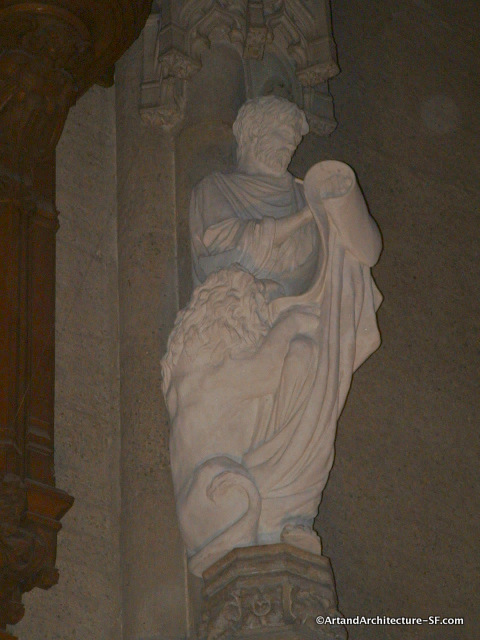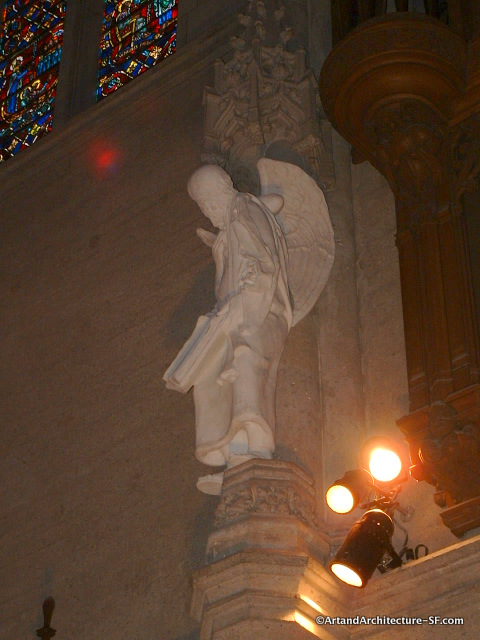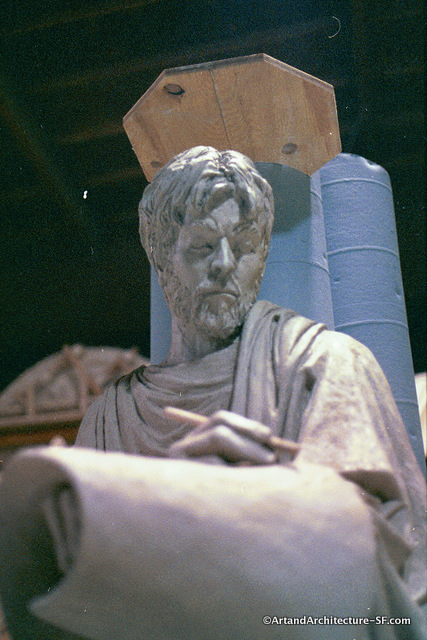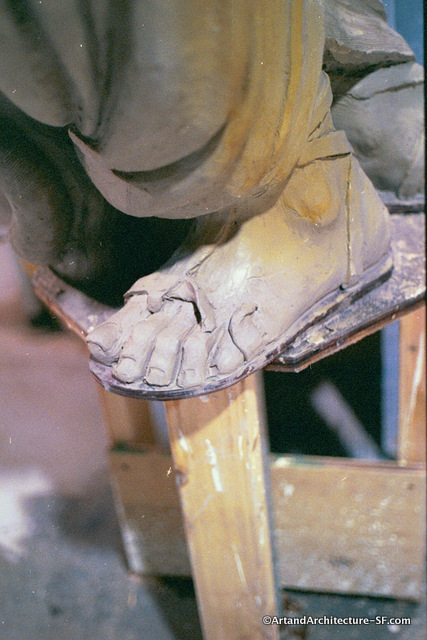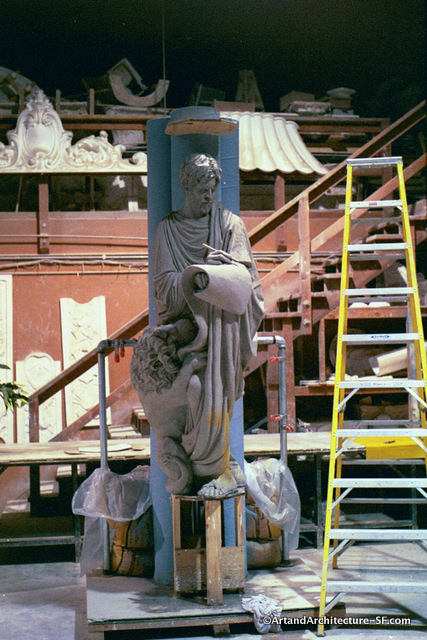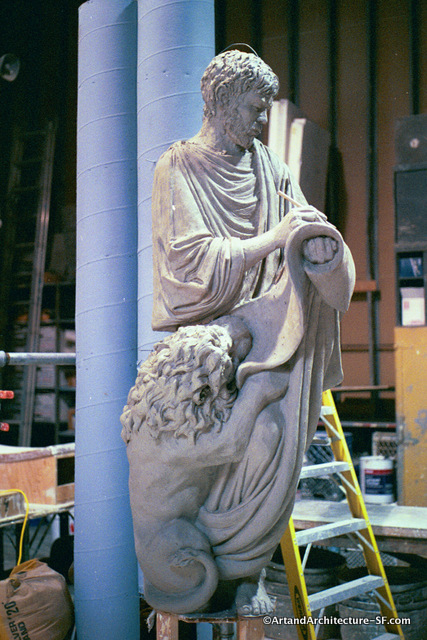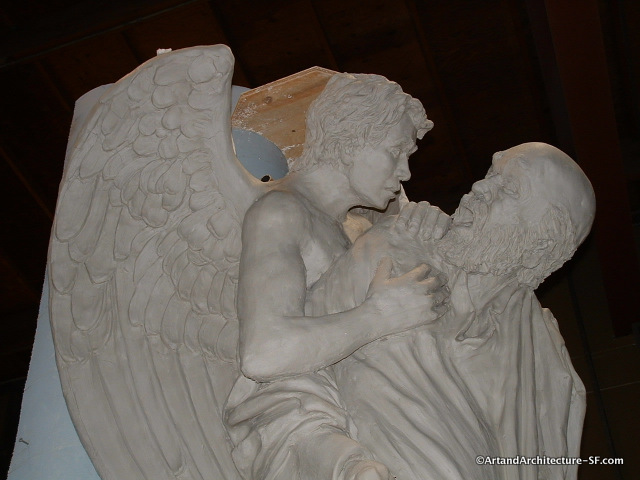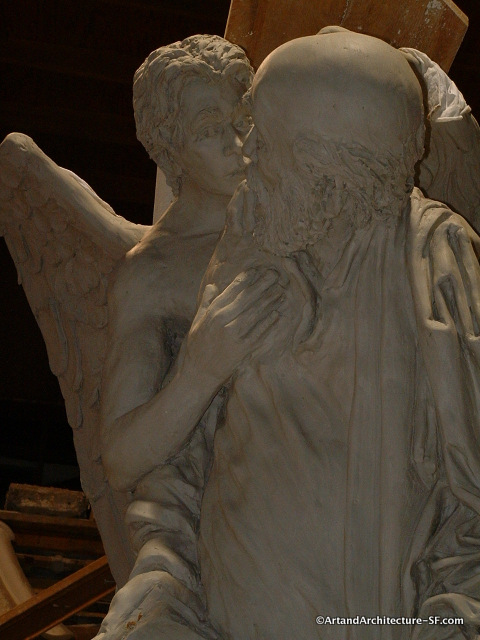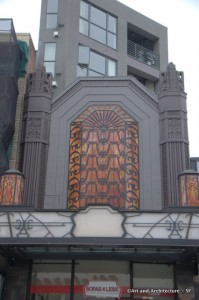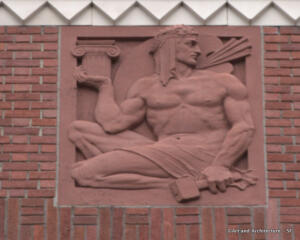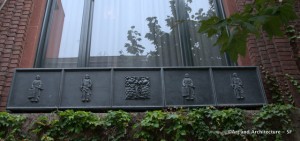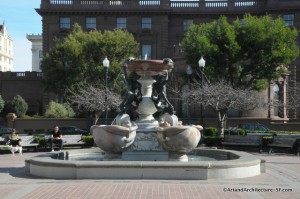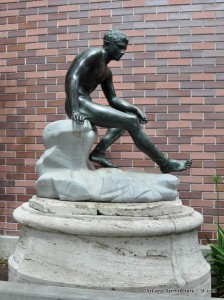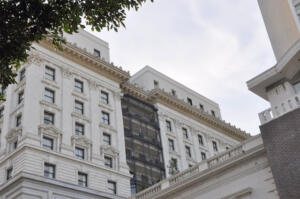Grace Cathedral
1100 California Street
San Francisco, California
Michael H. Casey was honored to have been chosen to sculpt both Saint Mark and Saint Matthew for Grace Cathedral in 2001 – 2002. He always felt he was chosen due to the fact that he mentioned seismic stability during his interview.
The sculptures were life sized, originally sculpted in clay with the final product in cast stone.
Michael’s Proposal for Saint Mark: Saint Mark has been described as a rebel. His gospel is terse and direct. Much has been made of the ordering of the events in his gospel, almost as if he wrote down Saint Peter’s teachings as they occurred to him. I have shown him as a younger man, in his early thirties, strong and vigorous. He has stopped in mid-stride, as if impatient to jot down a thought before it’s forgotten. He is dressed in typical Roman garb, because so much of his writing was thought to have been done there. The folds of the clothing, as well as the tall, slender figure are meant to conjure up images of the Saints depicted in the Gothic cathedrals of Europe He is shown with his iconic symbols, the lion, reflective of the incident where Mark’s faith in God converts his father, and the broken sandal, because his first convert was a cobbler he visited to repair a shoe.
Michael’s notes for Saint Matthew: Saint Matthew is derived largely from Caravaggio’s painting. Because he came to Christianity late in life, after a successful, if not too popular, career as a tax collector, he is depicted as a much older man, almost elderly. His garb, again derived from Caravaggio, is more typical of the East, where his ministry lay. The drapery is again reflective of his future Gothic surroundings. His is captured here at the moment of the angel’s appearance, hopefully depicting the awe and wonder of the occurrence. The angel, though his iconic symbol, plays a much larger role in this sculpture than that of a mere identifier. On reflection Saint Matthew is captured perhaps a split second later than in Caravaggio’s painting. His tax roll book forgotten, it has lowered of it own weight and is about to be dropped completely. I suppose this is symbolic of Matthew dropping his old, Judaic life to follow the path of Christianity.
*
*
*
Michael always felt that the one person at Grace Cathedral that never got credit for all his hard work on making these happen was Fermin Nasol, so I would like to give him credit right now.
Michael also told a funny story about first meeting the art board : “When we had the first meeting, I entered the room and they were all seated around a conference table; three on the long side, one at each end. The remaining long side – my side – was empty save for the lone chair right in the center. After shaking hands all around and making introductions, I went to sit down, but as soon as I touched the chair, I jumped up saying “Wow that seat’s hot!!!” It broke the ice!
The sculptures, not including installation, cost $32,550 and were paid for by a grant from the Skaags Foundation.
